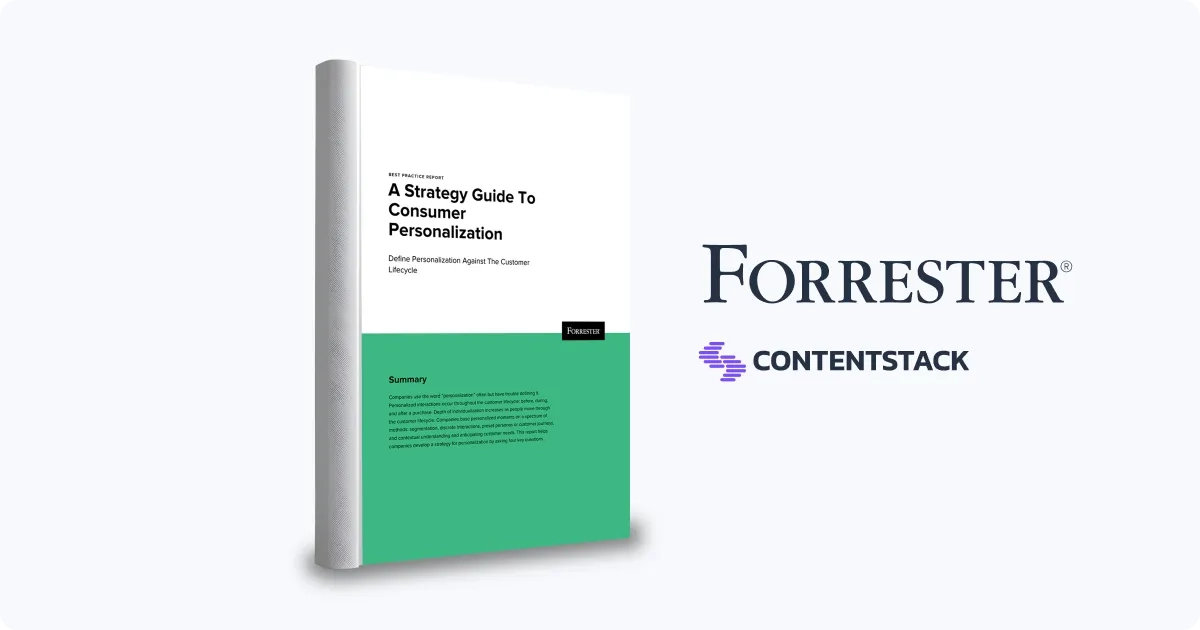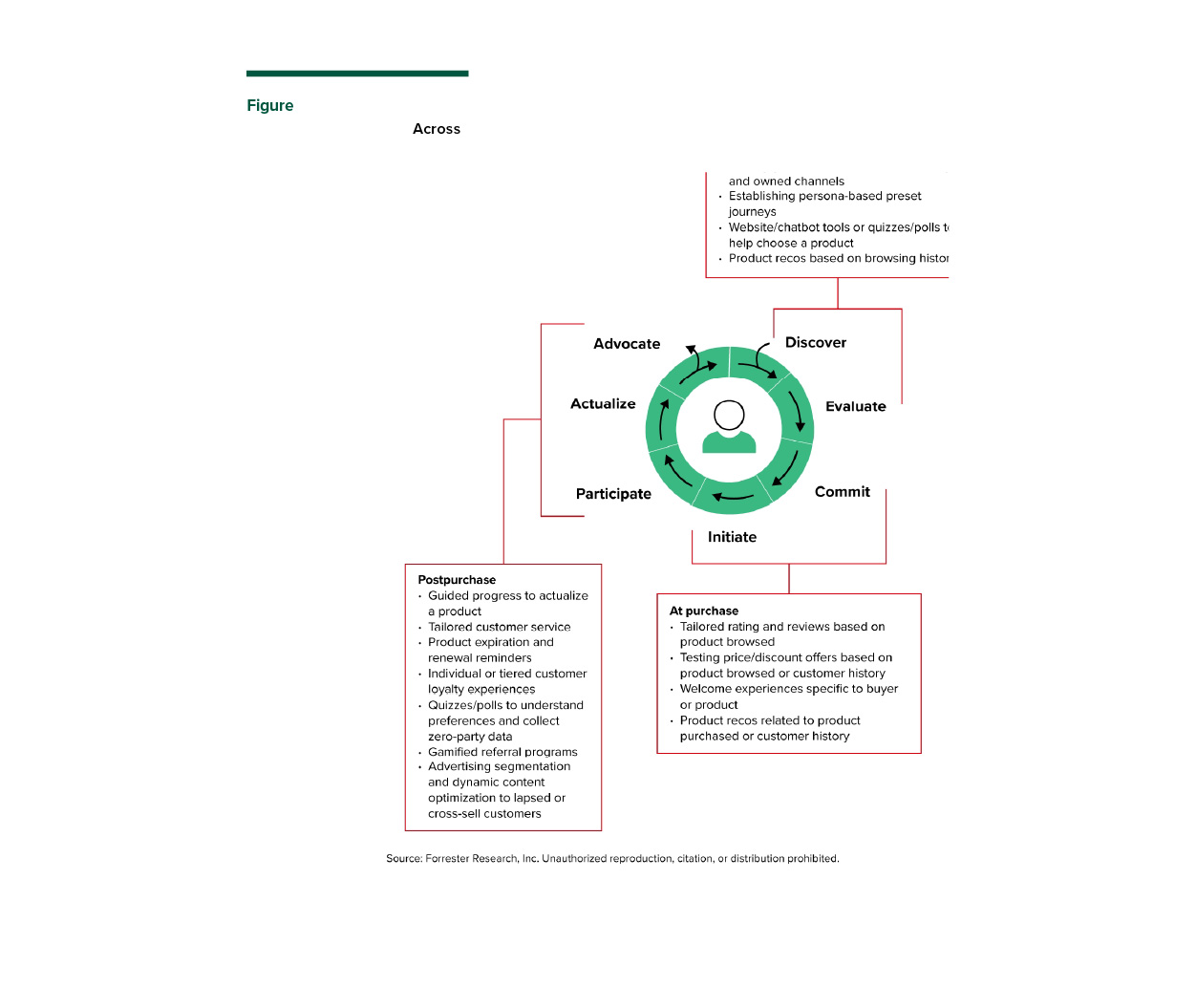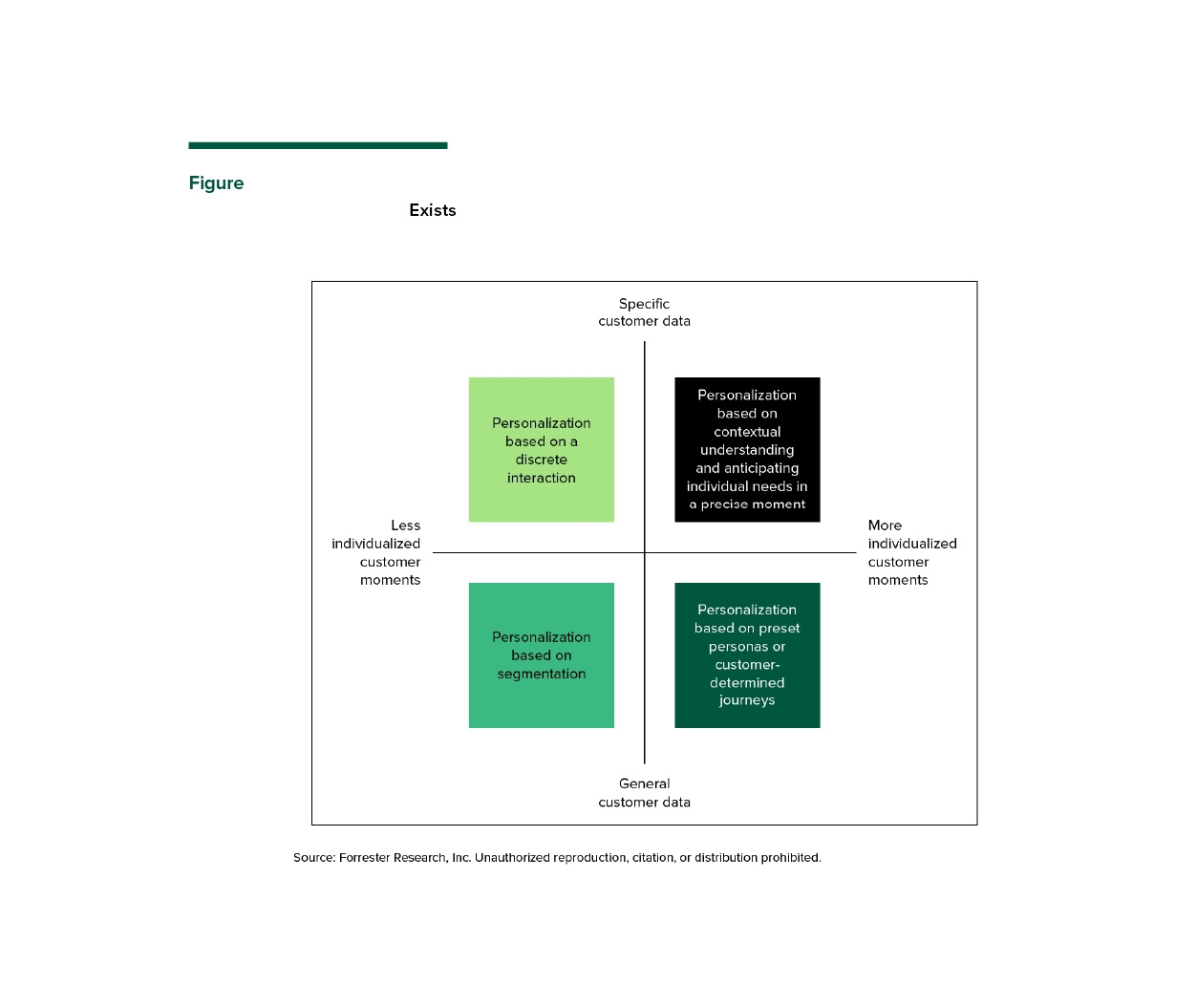
Forrester Best Practice Report: A Strategy Guide To Consumer Personalization

Read the Forrester Best Practice Report to learn how to:
- Get specific on personalization. Companies have trouble defining personalization, how it applies to their specific customer needs and business objectives, and how to seamlessly execute a personalized moment.
- Build multi-layered personalized moments. Personalization can happen at all depths and levels and sometimes simultaneously to the same customer.
- Refine your strategy with four key questions. To create personalized moments that really matter to consumers and drive results, you need a well-defined customer-led strategy.
Forrester Best Practice Report: A Strategy Guide To Consumer Personalization

Report Findings
Think of personalized experiences as existing on a customer-brand relationship intimacy spectrum: If a customer is willing to share more specific information with a brand, the more intimate the relationship is, and the more individualized an experience can be. To deliver unique, personalized experiences, companies can try:
- Segmentation. This takes the form of rudimentarily bucketing consumers or customers into specifically defined groups.
- Discrete interactions. Companies use single interactions that occur at a moment in time to suggest the next best product, offer, or action that optimizes against a short-term goal.
- Pre-set personas or customer-determined journeys. If companies want to guide consumers further along the customer lifecycle, defining pre-set personas or journeys forces consumers into a particular track with already determinedEmail writing for events, webinars
- milestones.
- Contextual understanding and anticipating individual needs. Anticipating individual needs based on context and customer history allows companies to deliver the most relevant and personalized moment — the ultimate state.


Recommendations
One of the best ways to effectively measure customer personalization is to test and track short-, medium- and long-term metrics together.
- Short-term touchpoint metrics: Touchpoint metrics assess a single touchpoint across a device, platform, or channel. To measure incremental lift at this level, run A/B or multivariate tests against a holdout group. A single test provides a snapshot in time, so build and test different points along the customer journey.
- Medium-term journey metrics: Journey metrics demonstrate customers’ progress along a self-determined journey. Create a learning agenda and test at different points in time or under different conditions, using the last test to inform the next one.
- Long-term relationship metrics: Relationship metrics evaluate the customer’s perception of the brand over years or months after implementing a personalization strategy. Companies use NPS and CSAT to assess customer feelings and collect data via customer feedback management programs.
Personalized interactions occur throughout the customer lifecycle. Companies base personalized moments on a spectrum of methods: segmentation, discrete interactions, preset personas or customer journeys, and contextual understanding and anticipating customer needs. This report helps companies develop a strategy for personalization by asking four key questions.


.svg?format=pjpg&auto=webp)


.svg?format=pjpg&auto=webp)
.svg?format=pjpg&auto=webp)
.svg?format=pjpg&auto=webp)
.svg?format=pjpg&auto=webp)







